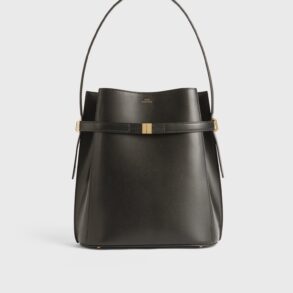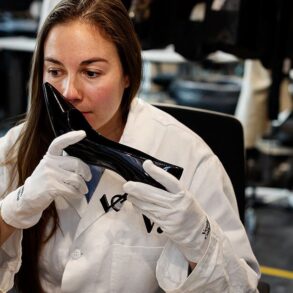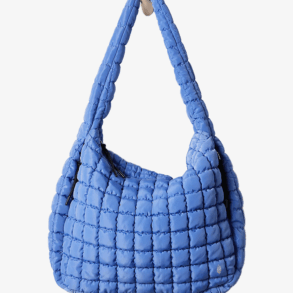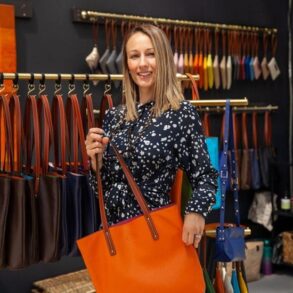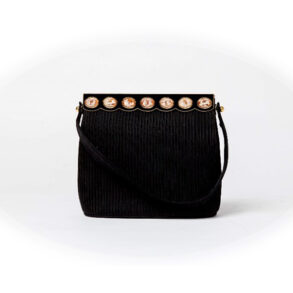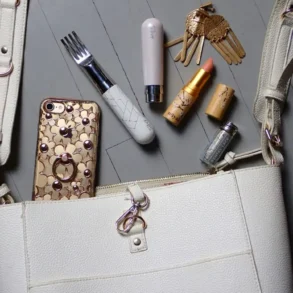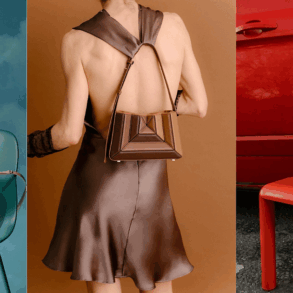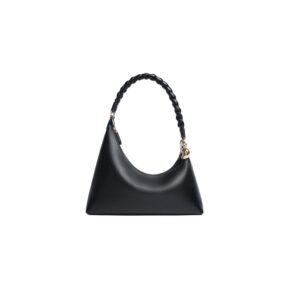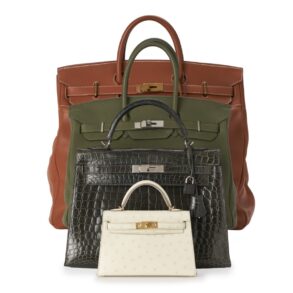Following the success of its first auction last summer in 2024, Christie’s is launching a new round of exceptional sales from June 19th to July 1st, focused on an exceptional collection of Louis Vuitton trunks. These rare lots retrace not only the history of the house but also the tastes and needs of private clients since the late 19th century. For Numéro, Lucile Andreani, head of “Handbags and Accessories” department at Christie’s, takes a closer look at three innovative trunks.
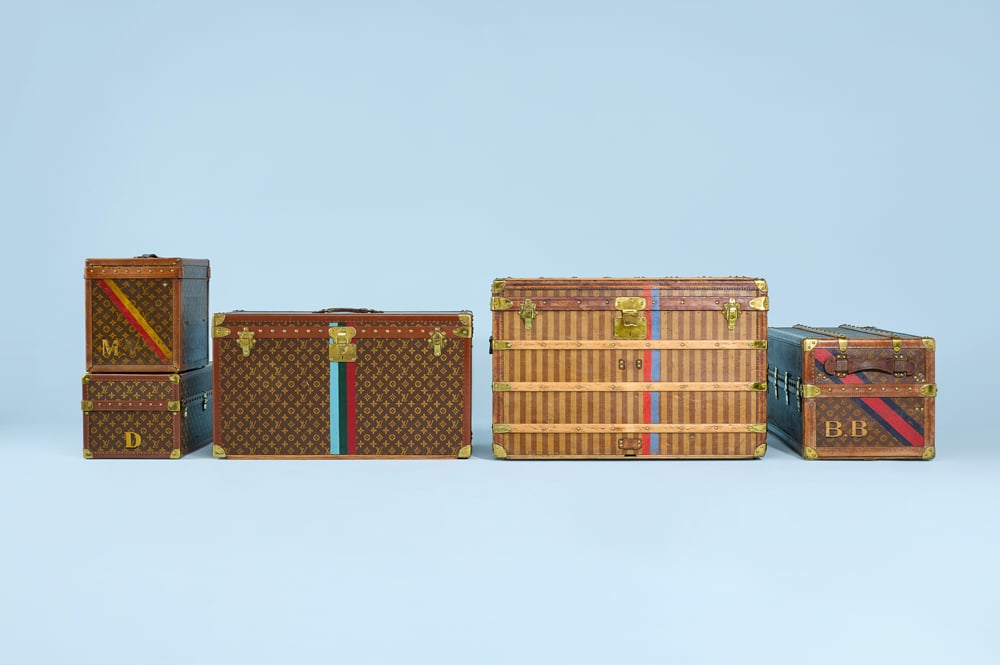

Luxury leather goods: a booming auction market
As the largest fashion houses continue to captivate with their latest, often viral, accessories – the Paddington by Chloé, the City by Balenciaga, the Speedy by Louis Vuitton, the Birkin by Hermès or the 2.55 by Chanel – this enthusiasm is also fueling a new market. That of auctions, which offer rare or limited-edition pieces, often sourced from the finest private collections, like at Christie’s.
Such is the case with the second chapter of Christie’s sale of historic Louis Vuitton trunks. Led by Lucile Andreani, head of the expanding department of “Handbags and Accessories”, the first occurence of this auction, launched in July 2024, reached record, and rather unexpected figures – €2.3 million were auctioned off from a total of 98 lots.
“This market turned out to be much bigger than we had imagined,” she tells us enthusiastically as the new auction of 104 pieces is about to start. “We’re holding more and more handbag auctions, but what’s unique about this one is that all the lots come from one single collector, who is passionate about Louis Vuitton trunks. He developed a keen interest for the art of travel, the craftsmanship of the French house, and the stories these pieces tell us. There’s a sort of chronology that emerges from these suitcases. This auction sale unveils the early days of luxury as we understand it today, as well as the technical innovations and boldness of Louis Vuitton.” As the online bidding opens on June 19th, Numéro revisits three exceptional trunks, selected and explained by Lucile Andreani.
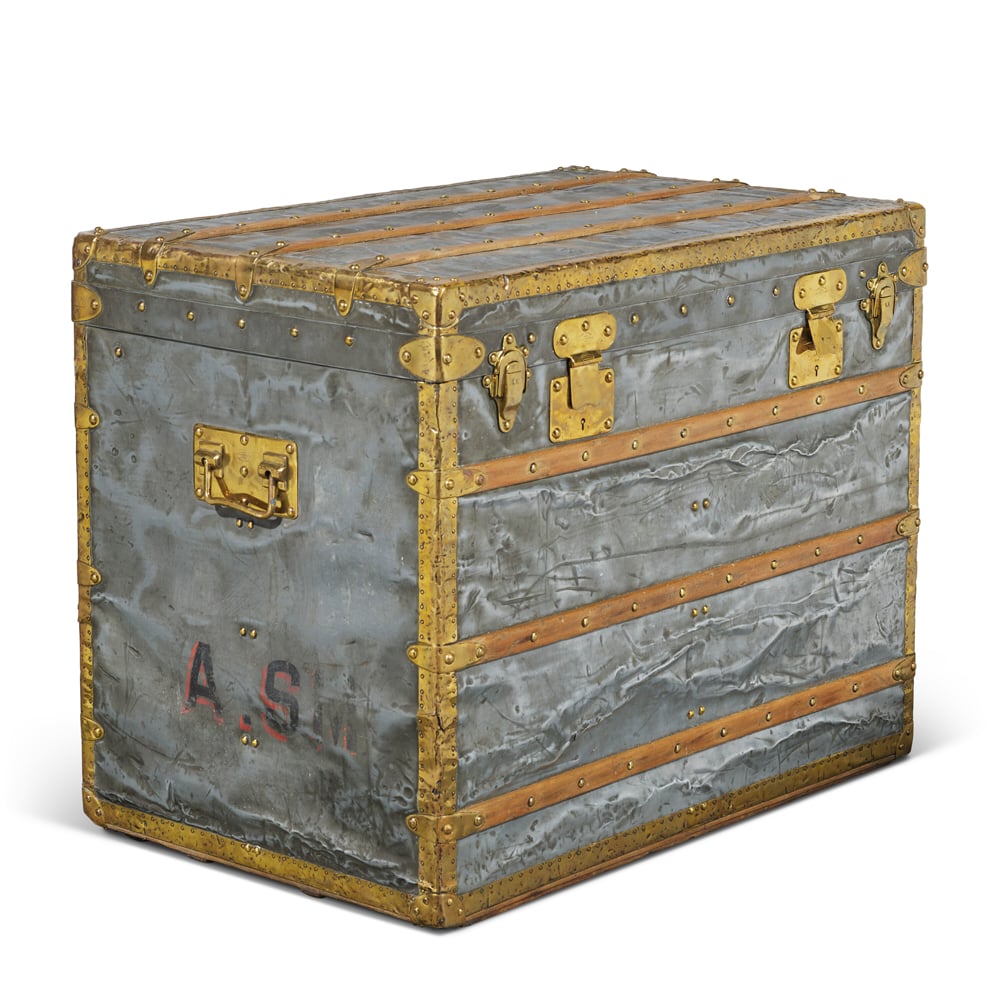

The explorer’s trunk: hermetic and durable
“This trunk embodies all the innovations and energy of the late 19th century. It was the era of explorers, of adventurers setting off to tropical countries to study them,” the Christie’s specialist explains. At a time when the French colonial empire was at its height, new forms of transport were emerging. Members of the military, civil servants, and officials were moving or traveling to Tunis, Oran, Asia, or India.
Each year, tens of thousands boarded ships heading for lands then considered as “exotic.” But their title dictated that these travellers brought everything needed to maintain their social standing both on board and upon arrival, along with outfits suited to the climate of their destination. “Louis Vuitton was the first to design trunks made of metal,” Lucile Andreani tells us.
“This zinc design represents both the luxury of that time and the innovation of the trunk maker. Thanks to its coating, it was completely airtight and keeping your belongings protected from moisture, heat, dust, and the elements,” she continues. A gem of luggage design, Louis Vuitton’s zinc trunk was launched in the late 19th century and quickly became a must-have piece. Its patented lock ensured total impermeability and earned the house’s founder a silver medal.
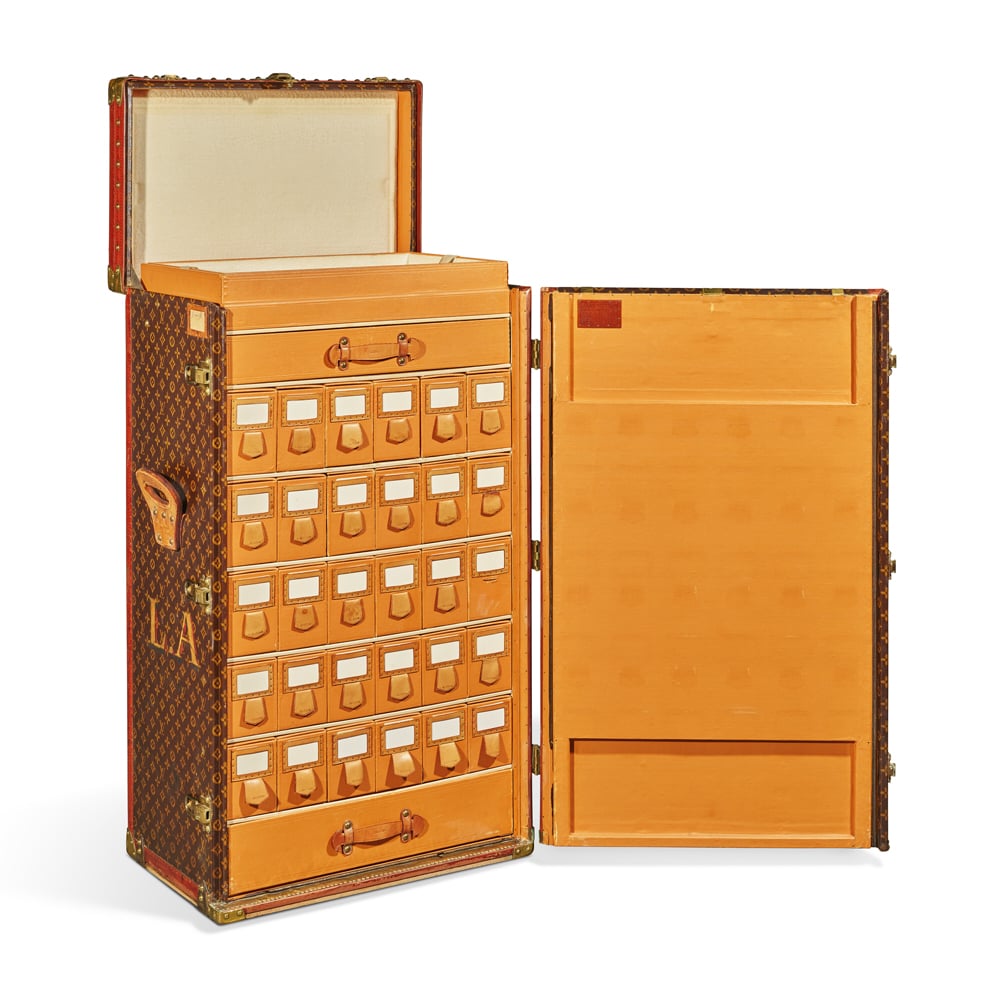

Lily Pons’ trunk, or the Hollywood glamour
This is probably one of the most iconic models in Louis Vuitton’s history: the famous shoe trunk. While the version made for actress Greta Garbo (1905–1990) is well known, the very first piece was created for Lily Pons, the French singer and 1930s Hollywood superstar. “To me, this trunk represents old Hollywood glamour. It reminds me of the wardrobes of today’s celebrities, who all have the designated compartments needed for their handbags, shoes, or jewelry.”
Like most stars at that time, her wardrobe was scrutinized and discussed in every tabloid and fashion magazine. Traveling with a vast array of outfits for her music tours across the United States and Europe, she needed to carry and protect her finest ensembles. That’s where Gaston-Louis Vuitton stepped in. Close to the celebrities of the time, he designed sumptuous trunks tailored to the needs of his prestigious clientele.
Carrying (and protecting) 36 pairs of shoes…
“As practical as this piece is, it is more of a whim. It allowed the singer to carry 36 pairs of shoes.” A fashion version of some sorts of the writing desk. “This design was quickly adapted for other actresses and clients who traveled often and wanted their wardrobe at hand. Like a portable closet,” Lucile Andreani says with a smile.
In the women’s press of the time, this trunk was hailed as “the ultimate symbol of Parisian chic,” and even described as “the must-have accessory of the traveling Parisian” (extract from Louis Vuitton: 100 Legendary Trunks, 2010, p. 271). Thus, this essential piece helped cement the French house’s success and showcased its innovative spirit. “It’s the birth of modern luxury: the idea that one can go to great lengths to meet a very specific need,” the specialist concludes.
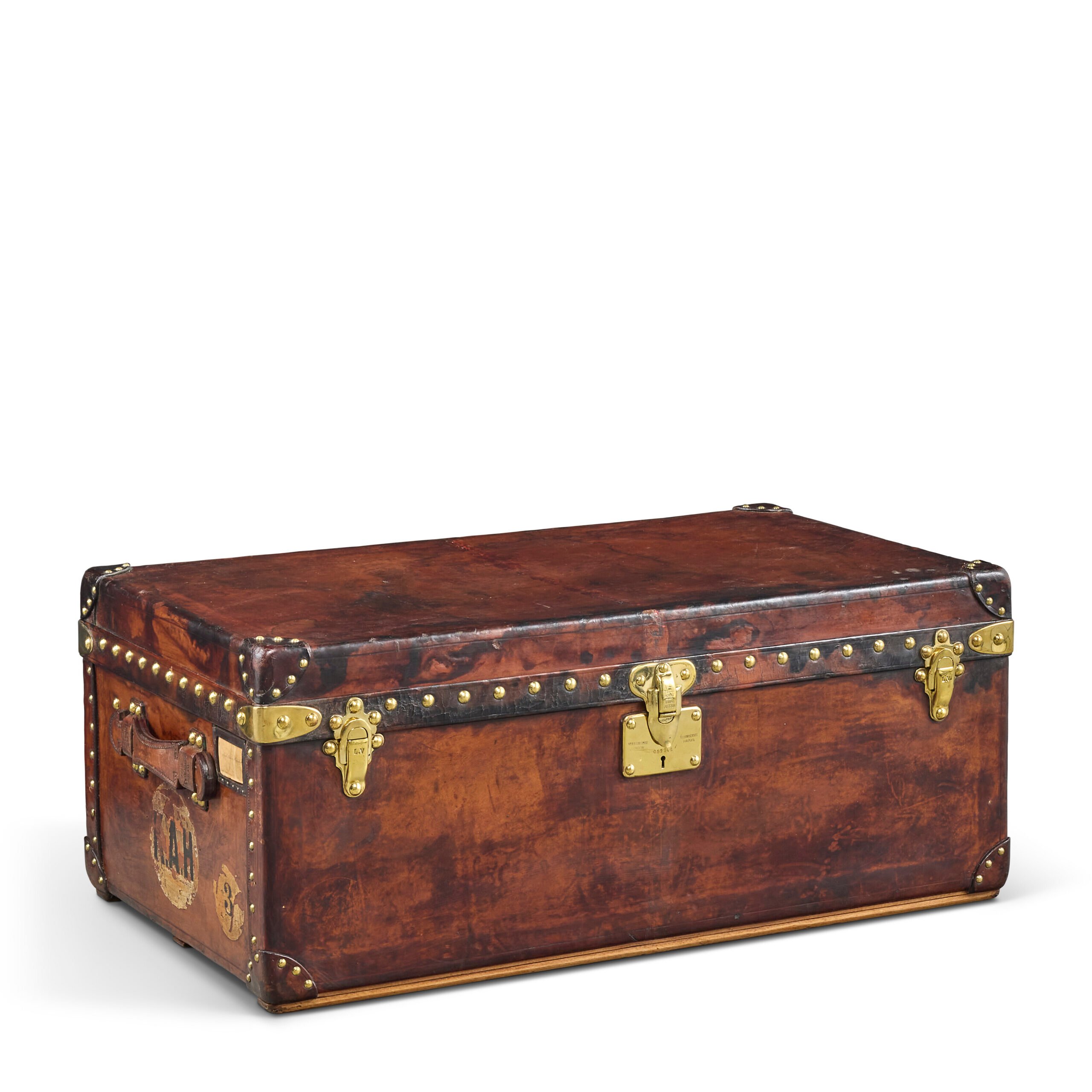

The Aero trunk: from hot-air balloons to airplanes
“This trunk embodies Louis Vuitton’s ability to innovate and adapt, whether in response to new modes of transportation or to aesthetic evolutions,” Lucile Andreani details. Officially registered by the house in 1908, the so-called “Aero Trunk” was initially designed to be attached to the basket of a hot-air balloon. Despite it basic appearance, this suitcase stood out for its unprecedented lightness at the time. “Louis Vuitton wanted to create trunks that were unsinkable, watertight, and wouldn’t add too much weight to a balloon,” she continues.
As air travel developed, airplanes soon replaced hot-air balloons. The French house’s trunks became essential. Lightweight and compact, they weighed 26 kilograms only when packed. A technical feat for the 1930s that established Louis Vuitton as a leader in that industry.
The ancestor of carry-on luggage
A 1927 advertisement in L’Illustration illustrates this innovation: “Why pay excess baggage fees when there are marvellous trunks that, when full, don’t weigh more than 30 kilos?” (extract from Louis Vuitton: 100 Legendary Trunks, 2010, p. 59). “This piece is truly the ancestor of the carry-on. But because of its fragility, it didn’t stand the test of time as opposed to other trunks. That’s why so few remain today,” the Christie’s specialist adds.
“These types of trunks are very rare. They reflect how society evolved and traveled at that time. It’s fascinating to see how these objects were used before, and how they are used today, as decoration. While we no longer travel with these rather heavy and elaborate trunks, we have revamped them as mini-bars, coffee tables… They are luxury pieces with a unique aesthetic and a compelling history,” Lucile Andreani concludes.
Christie’s online auction “Legendary Trunks: A European Private Collection: Part II,” from June 19th to July 1st, 2025.
Exhibition from June 21st to 26th, 2025, at Christie’s, 9 avenue Matignon, Paris, 8th arrondissement.
This post was originally published on this site be sure to check out more of their content.










